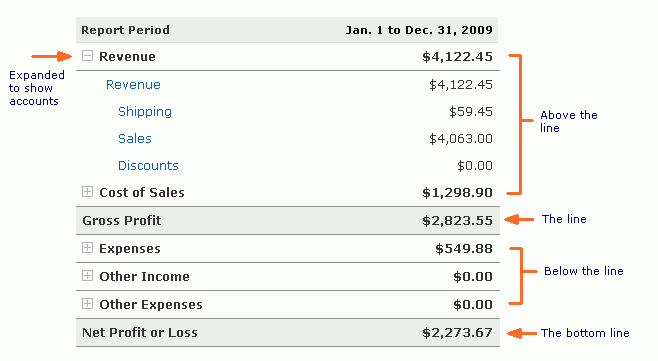When does a ‘no vacation policy’ policy make sense?
Topic: Entrepreneur Evangelist,Managing Your Business | Comments (2)

Work by sculptor Sun Shaoqun entitled "Beyond Space Time" in Wuhan, China in 2007
Last spring, I was reading the annual WorldBlu list of the most democratically run organizations in the world. One of the companies that caught my eye was one whose democratic organizational practices included eliminating a formal vacation day policy.
I remember making a mental note of the idea, because I liked it and wanted to keep it in mind as part of our plans for developing our business over time. To me, it seemed like a logical extension of the Results Only Work Environment (ROWE) concept, which has proven very effective at large companies like Best Buy, while having always been — at least to some extent — a natural part of my career DNA at almost every company I’ve ever worked.
This debate has recently been kicked into the spotlight, thanks to Netflix fairly high profile stand on this position — what started off as a simple presentation (see below) describing their corporate culture, quickly turned into a big debate on the specifics of their vacation policy.
A recent article in Business Insider, Henry Blodget inspired a great deal of commentary when he asked readers what they thought of the idea — most of the responses are in opposition to the idea of a no-policy policy around vacation days. On Entrepreneur.com, author Tanya Payne added a fairly dismissive comment by asking, “Is Netflix run by a bunch of hippies?”
I’m fascinated by this debate, in large part, because in my experience as a white collar, tech professional is that — whether or not it’s “official,” every place I have ever worked has done precisely this. The reality, however, is just that: this is not something that places with hourly staff, or huge organizations are likely to find either appealing or even terribly practical. So, for me, the question is not, “Does a ‘no vacation policy’ policy make sense?” But instead, “When does a ‘no vacation policy’ policy make sense?”
As someone who works in a geographically independent profession on dynamic, project-specific, virtual teams with entrepreneurs and small organizations, this is sort of an obvious no-brainer. Even more importantly, what I like best about the idea of a ‘no policy policy’ when it comes to vacation time, is the fact that forces team accountability: either the person taking a vacation makes the necessary arrangements to be covered while they are out, or the person who hired them has to acknowledge that their staff is not mature enough to handle the responsibility of being treated like an adult — in which case, whether or not that person should stay needs to be asked and answered.
I also like that it eliminates what can seem like arbitrary favoritism in a crisis. Several times in my career, I have seen different sides of this equation, and all of them support the reasoning behind a no policy approach:
- A co-worker’s husband had a massive heart attack and, as a result, she was out of work for about a month. She had neither the vacation nor sick days accumulated to cover her time off, but no one for a second questioned that. She needed to be home with her family, and — even more importantly — now that their income had just suffered a massive (and indefinite) hit, the last thing she could afford to do was to have to chose between paying the bills or taking care of her husband and kids in the wake of a family crisis.
- As I was leaving another company, my final paperwork indicated that I had a negative number of vacation hours, based on my accrual rate and the amount of time I’d been with the company. However, the person handling it “wasn’t going to make a big deal” about it, and let it go without docking my final paycheck the even out the number of hours in my vacation bank.
- During a particularly high stress time in my years with another company, my boss — being both perceptive and prudent — recognized that I was overly taxed and at the end of my rope. With a non-negotiable Thursday morning instant message, he effectively kicked me out of the office for the following week and told me to clear my head, get some rest and that he didn’t want to see me until a week from the following Monday.
In each of these cases, the “official” policy said one thing, but the culture of the organization over-ruled it when circumstances arose. I think that doing this is far more dangerous — and potentially rife with conflict — than simply stating, “We do not count your vacation hours. Be a grown up. Plan accordingly, and work with your team to make sure your responsibilities are covered.” Because at least that policy sets the expectations.
The problem with exception-based end-runs around official policies is that you can’t prevent them. But, worse yet, they are fickle. It depends on the people involved, their relationships, the timing, their responsibilities, etc. That is where I see the vast majority of unfairness playing out, because there is no way to stop someone from working out a special arrangement because of “special circumstances.” The trouble with that, though, is who defines what the special circumstances are, which ones warrant a special deal, and what happens when someone else’s “special circumstances” are dismissed as less worthy of special arrangements?
Of course, the flip side in my universe is that I am a workaholic who seeks out high-chaos environments where no one ever only works 40 hours per week. I also specifically work in smaller organizations with a lot of flexibility, where working from home is standard, and where expectations are different. If there is one thing I learned working in the airline industry, it’s that there are different rules for hourly customer service teams than there are for backoffice salaried teams. Is that fair? Probably not. Is it avoidable? If it is, it’s probaby only possible while an organization is still small. (And even then, I’m not sure I’d be willing to bet the ranch on that.)
So, while I find the debate over the no vacation policy issue intersting, I guess what I mostly find is that it’s ignoring a tremendously important factor: it depends on your team, your culture, your services and your business. As with many things, the smaller the organization, the easier some of these things are to manage this way. Often times, stricter, formal policies arise out of a need for clarity that comes from too many different managers managing too many different teams that have too many different people. Clarity is a security blanket.
I think there are better ways to accomplish that clarity that are both more fair and more respectful, but a formal policy can definitely have its value. But then again, so too is there value in a boss recognizing that a member of his team is burned out and needs some time off, whether or not they have the official hours banked to take it.
I guess the real key boils down to three vital questions:
- What kind of business do you want to run?
- What kind of people do you want to hire?
- And what kind of boss do you want to be?
It is probably only with a specific combination of answers that a no vacation policy can make sense. But, I’d venture to say that where it does make sense, it’d be hard to find a really good reason not to do it.
Alora Chistiakoff is an entrepreneur, content strategist and project manager who has been developing online business and technology for startups for more than a decade. She co-owns The Indigo Heron Group, Inc., a content strategy firm in Austin, Texas





 So far this week, we’ve covered free tools for entrepreneurs ranging from
So far this week, we’ve covered free tools for entrepreneurs ranging from  In yesterday’s
In yesterday’s 
 The word “collaboration” is one of those hot buzzwords in the online space, and for good reason: Web 2.0 has, at its core, the ability to make the rapid communication and execution of action (whether work or play) much easier than previous forms of technology ever accomplished.
The word “collaboration” is one of those hot buzzwords in the online space, and for good reason: Web 2.0 has, at its core, the ability to make the rapid communication and execution of action (whether work or play) much easier than previous forms of technology ever accomplished. The single biggest struggles I encounter with entrepreneurs trying to build a business is marketing. Some small business owners don’t think about it; some don’t understand it; some don’t like it; some cling to the belief that it simply shouldn’t be necessary, as long as their product is good enough. One way or another, though, marketing is always one of the first places entrepreneurs request help.
The single biggest struggles I encounter with entrepreneurs trying to build a business is marketing. Some small business owners don’t think about it; some don’t understand it; some don’t like it; some cling to the belief that it simply shouldn’t be necessary, as long as their product is good enough. One way or another, though, marketing is always one of the first places entrepreneurs request help.